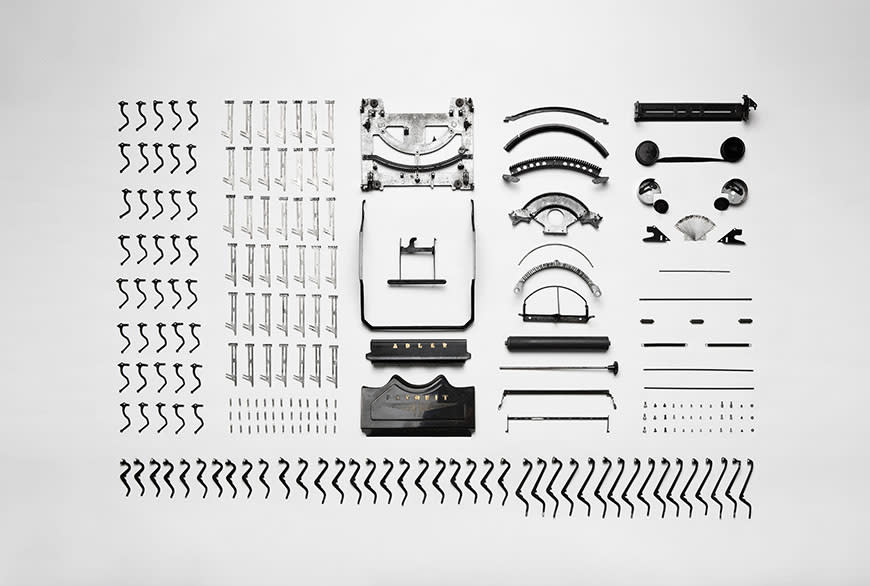
Sometimes I choose plastic at the grocery store. I never bring my own mug when I go out for coffee. And yes, I’m wearing a fast-fashion shirt today (it has red polka dots and I thought it was awesome, and I’m sorry). By no means am I always as responsible a consumer as I’d like to be. That guilt we sometimes feel at checkout reflects a broader conversation around the impact of our consumption: real change comes through the combined action of many smaller moves, but we’re not always able to coordinate these actions ourselves.
For people looking to turn mission into lifestyle, brands are making it easier to effect system-wide change by espousing enhancements to their operations and their work cultures, not just their products. Here are a few examples:
Last October, online-to-offline fashion house Everlane released their ReNew clothing line, promising a reduction in virgin plastics by swapping regular synthetics for renewable synthetics in their garments, switching to recycled poly bags for packaging, and even removing certain types of food containers from stores and offices. Blue Bottle Coffee recently ditched the iconic cerulean straws (goodbye bioplastic, hello paper), citing difficulties in ensuring proper disposal, since bioplastic acts just like regular plastic if not properly composted. Tree Toppers—shoes by Allbirds, which I’m also wearing at the moment—talk about the eucalyptus trees that comprise their fibrous uppers in the same sentence as they talk about breathability, making the message clear: your comfort and our manufacturing are one and the same. Even IKEA has continued its recent expansion of sustainable products by purchasing 25,000 acres of forest in Alabama and committing to achieve Forest Stewardship Council certification there.
Brands don’t succeed through supply chain alone: they’re winning with the careful combination of convenience, aesthetics, performance, and price.
Environmental and corporate social responsibility has been around for a while: McDonald’s famously shifted from polystyrene packaging to paper in the late 1980’s, Whole Foods has deeply integrated an Animal Welfare Rating across its animal-based products since 2008, and in 2011 Patagonia became certified as a benefits corporation to reduce restrictions on spending for their sustainability programs. Across the manufacturing industry, the trend is alive and well: according to Gartner’s April 2019 evaluation of product lifecycle operations, the leading future investments in the next 12 months are related to sustainability, social, and consumer safety tracking, with 42% of companies in the United States looking to expand this part of their business.
While industries like apparel have a clear head start, others such as emerging on-demand food delivery in China are still trying to understand the challenges. For companies looking to get ahead, here are three key opportunities:
Bundling Decisions
Brands don’t succeed through supply chain alone: they’re winning with the careful combination of convenience, aesthetics, performance, and price. Allbirds is explicit in their bundled approach: “It starts with better materials, continues with better design, and carries through to better factories and shipping methods.” Instead of highlighting a single benefit in a product, we’re seeing entire experiences with a consistent ethos.
Audience Participation
As EPAM Continuum’s Toby Bottorf explores, consumers are willing to participate in the final steps of distribution and assembly themselves, further increasing their engagement while also minimizing stress on social or environmental impacts. In EPAM Continuum’s work with Primo Water, our teams have considered how people think about bulk drinking water, carefully coordinating that experience to minimize cost and waste, benefits shared by business and consumer alike.
Weathering Skepticism
Brands need to go beyond just saying what they’re doing: they need to prove it. To show the benefits of plant-based BBQ, Beyond Meat commissioned (so add a few grains of salt along with that ketchup) a detailed report from the University of Michigan to demonstrate their lower carbon footprint. Compared to a typical beef patty, their meatless patties have a 90% reduction in greenhouse gases as a result of their efforts in ingredient sourcing, energy use, refrigeration, lighting, and packaging. Coffee giant Starbucks has long told a bean-to-cup story about its brews; to enable better tracking and features like predictive ordering, it recently introduced blockchain-enabled beans to allow customers to better understand production and sourcing.
Brands need to go beyond just saying what they’re doing: they need to prove it.
In EPAM Continuum’s work with Jamba Juice, we learned that healthfulness and freshness were key factors for patrons, and so we found ways of adding “freshness cues” throughout the experience, including placing fruits and vegetables front and center, educating team members about healthful living, and creating a digital ecosystem that integrates ingredient sourcing information into the ordering process. Individually, these cues could be heavily scrutinized. Taken together, they form a broader platform to reinforce messaging the promise of freshness with greater credibility.
Ultimately, consumers support the institutions that reflect their aspirations for who they want to be and the impact they want to see in the world, specifically because they’re not always able to meet those ideals themselves. To succeed, brands must first deeply understand what’s important to their customers, and having done so, supersize that impact in ways their customers never could alone.
Stay tuned for our next installment, in which we discuss how to identify Supply Chain Therapy opportunities in your own business. In the meantime, we’d love to hear aboutyour experiences with Supply Chain Therapy.




